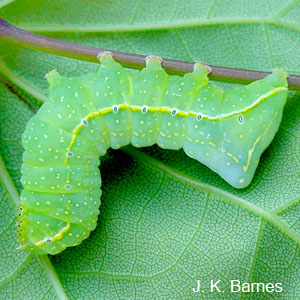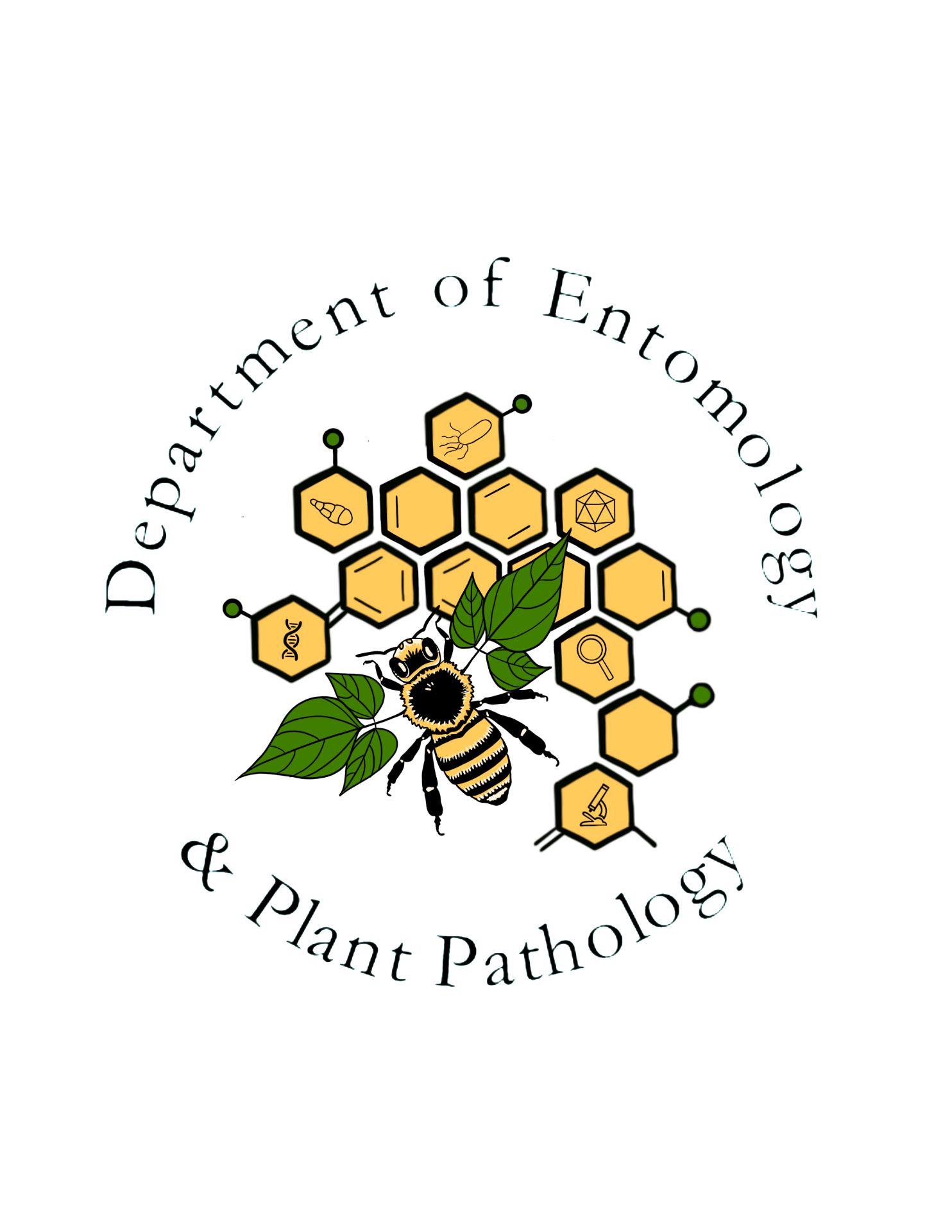Copper underwing
Order: Lepidoptera
Family: Noctuidae
Genus and species: Amphipyra pyramidoides Guenée
Adult copper underwings have a fairly large wingspan, up to 2.3 inches, but smaller than those of most true underwings of the genus Catocala. The forewings are dark brown, and the hindwings are distinctive for their shining copper color and lack banding patterns. The larvae are striking blue-green caterpillars with cream and yellow spots and stripes and a conspicuous hump on the eighth abdominal segment. This common and widespread species occurs in dry, deciduous woodlands of southeastern Canada and the eastern United States. The solitary caterpillars feed on many species of woody plants, including apple, ash, basswood, birch, blueberry, cherry, chestnut, currant, grape, greenbrier, hawthorn, hickory, lilac, maple, oak, poplar, raspberry, redbud, rhododendron, viburnum, Virginia creeper, walnut, and willow. However, the copper underwing is not considered a pest species. Caterpillars are typically found on the undersides of leaves, where they feed. They quickly move on to new leaves so that bird predators cannot find them by searching for their feeding damage. Adults emerge in late summer and early fall and tend to form large aggregations until they become reproductively active and disperse. Gravid females lay eggs through mid autumn, and the eggs overwinter. There is one generation per year. Like other moths in the family Noctuidae, adults have thoracic ears that are assumed to function in detecting night-flying predatory bats. In laboratory trials, adult copper underwings exposed to simulated bat-attack sounds had significantly shorter nocturnal flight times than a control group.

